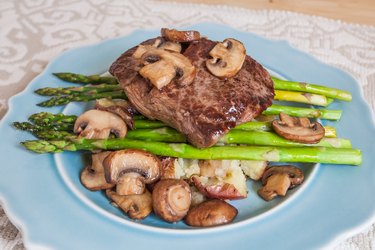
The distinctive cross-hatch marks of a steakhouse grill add more than decoration to a steak. The browning process creates much of the richly aromatic flavor that makes the beef so enjoyable. If you want to create a restaurant-style filet mignon at home, you'll need to recreate that intense steakhouse-style browning without an industrial strength steakhouse grill. As it happens, an ordinary cast-iron skillet is a more than adequate replacement.
In Praise of Cast Iron
Video of the Day
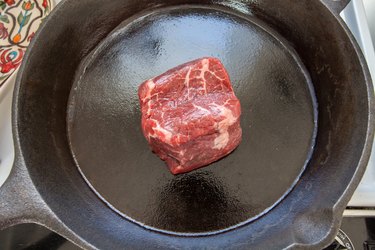
Chefs prize aluminum and copper pans for their ability to transfer heat quickly and efficiently, but cast iron is precisely the opposite. It takes much longer to warm up, but once brought to temperature, it retains that heat tenaciously. When your steaks hit the surface of the skillet, it provides precisely the kind of intense browning you'd get from a restaurant grill. In fact, it's superior, because the flat cast-iron skillet provides browning over the entire surface of the fillet, rather than the scant stripes imparted by a grill's bars.
Video of the Day
The Pan-Sear Technique
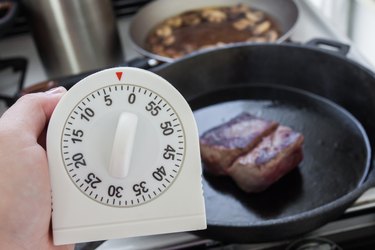
Filet mignon, or any steak cut from the tenderloin, cooks relatively quickly because of its lack of insulating fat. This can be inconvenient when cooking in cast iron, because it's all too easy to overcook the steak's surface before its interior reaches your desired doneness. The secret is to begin at high heat to sear the surface; then finish the filet with more moderate heat. The oven provides an ideal source of diffused heat for the second stage of that process. Sear the filet for 2 to 3 minutes a side in a hot skillet; then transfer the pan to a preheated broiler oven at 425 degrees Fahrenheit for another 6 to 8 minutes per side. Alternatively, slide the skillet under a preheated broiler for just half that time.
The Pan-Broiling Technique
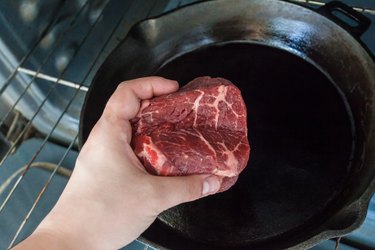
If you must keep your stovetop free for preparing other dishes, a simplified version of the pan-searing technique uses your broiler for the entire cooking process. Place the cast-iron skillet 4 inches beneath the broiler, and leave it there for 20 minutes as the broiler preheats. Open the door and slide the rack out partway -- take care to avoid the gust of super-hot air that escapes -- and place your filets in the hot skillet. Broil them for 4 to 6 minutes per side until they reach medium-rare when tested with an instant-read thermometer.
The Stovetop Method
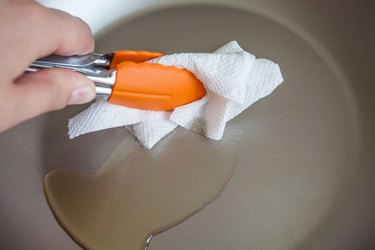
If you'd rather not heat your oven for such a quick meal, you can also prepare your filets entirely on the stovetop. Start with the skillet at only a medium-high heat, because you won't need such an intense initial sear. Oil the skillet lightly, and cook your fillets for a total of 8 to 10 minutes, depending on their thickness. Turn the filets every 1 1/2 to 2 minutes or at even shorter intervals, so they'll cook evenly. That runs counter to the turn-once tradition, but its effectiveness has been well documented by science-oriented food writers such as author Harold McGee.